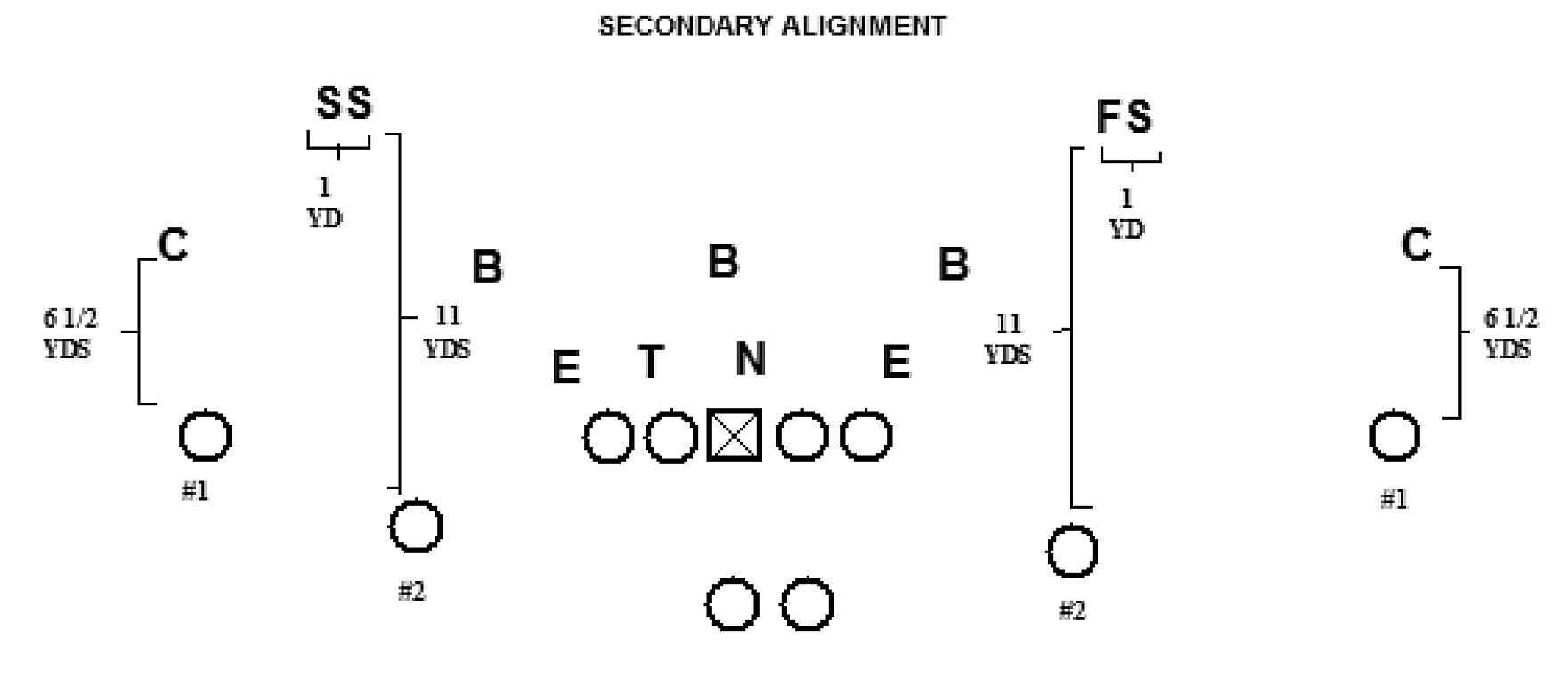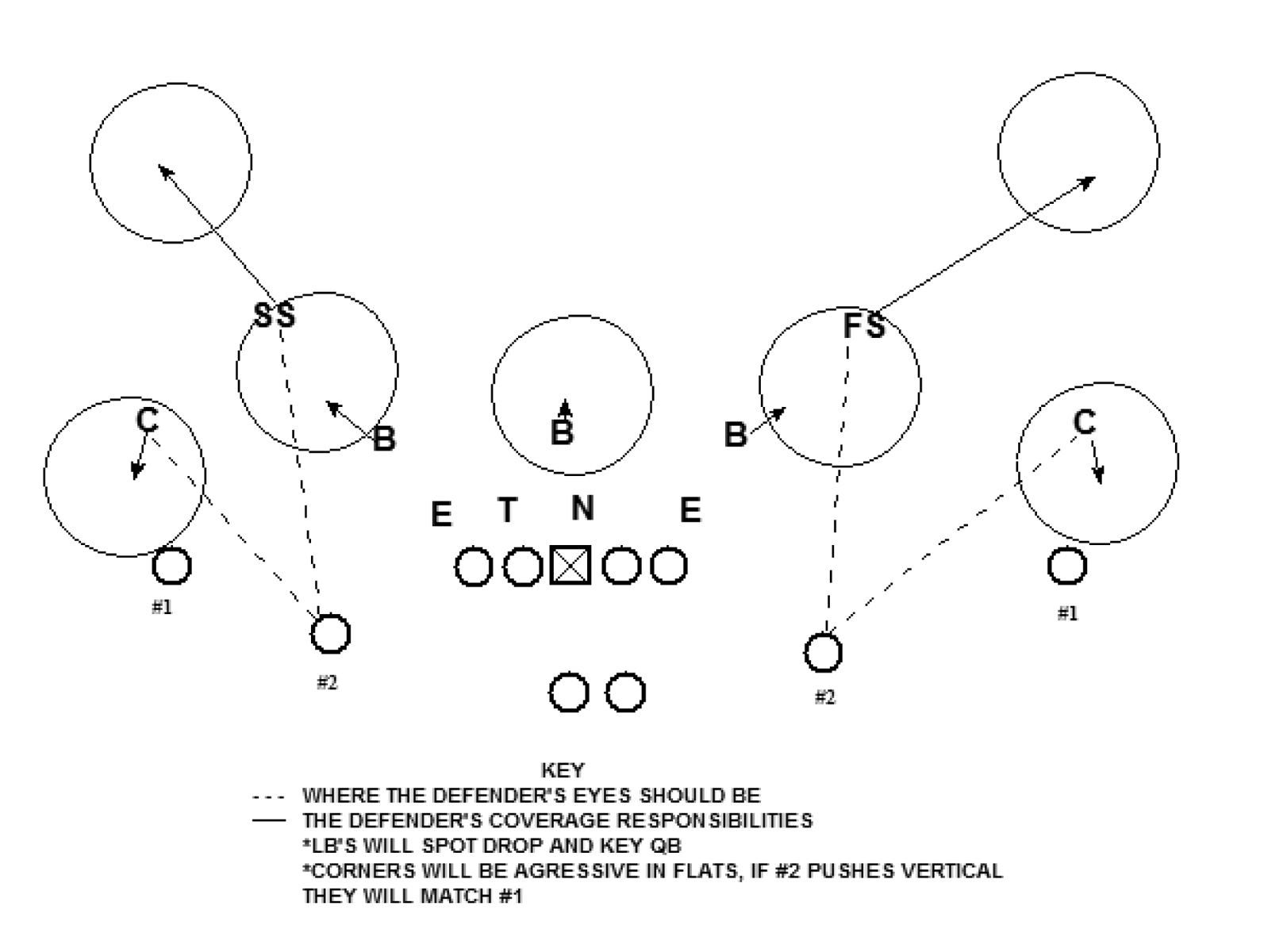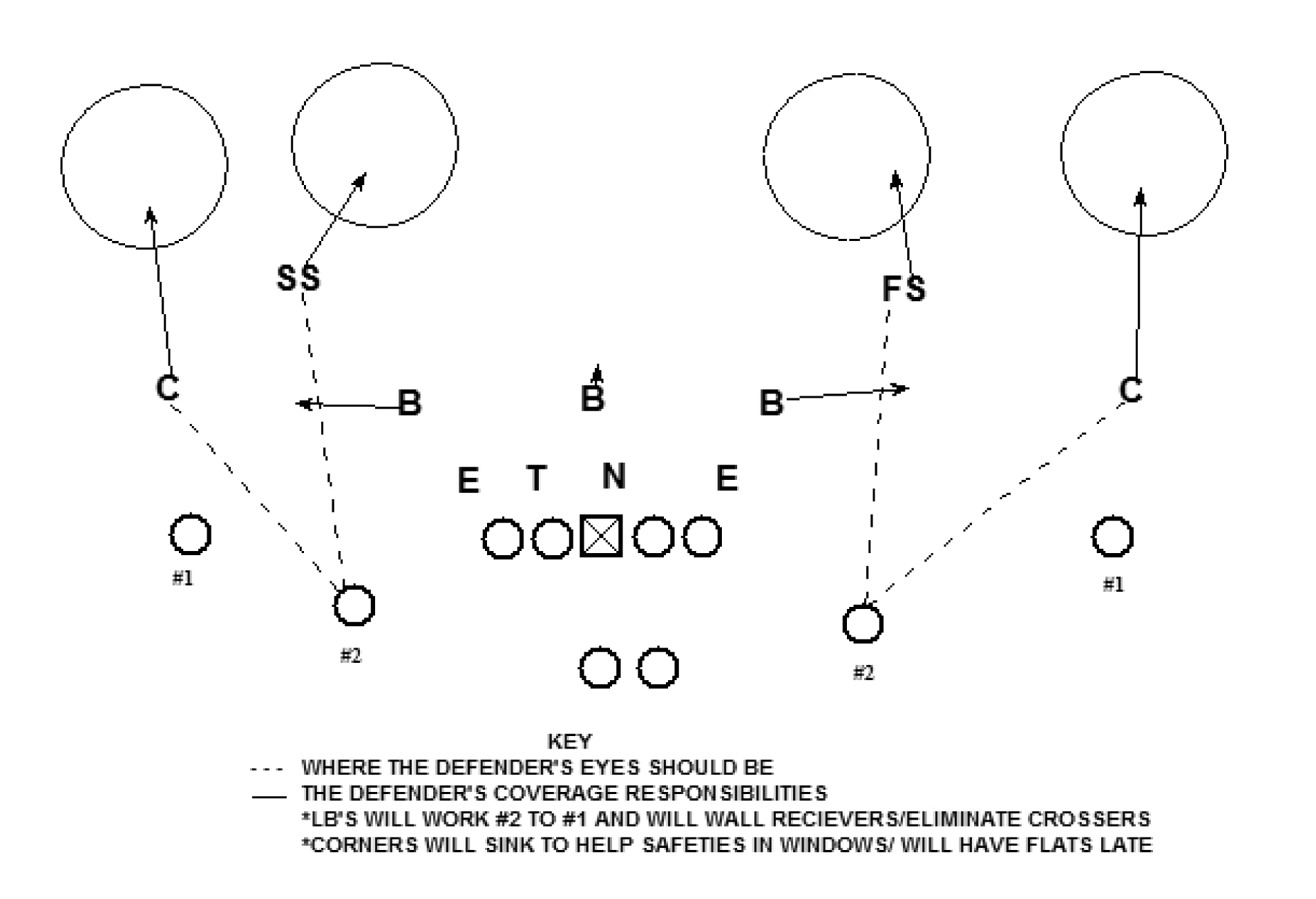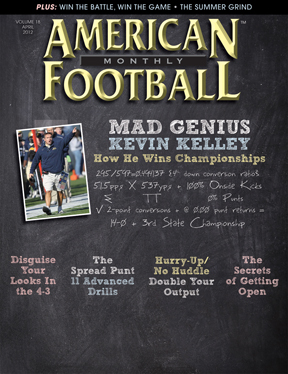Different Looks from the 4-3 Defensive Scheme - To be effective as a defense, it’s critical to give multiple looks and disguise coverage on every play.
by: Dayne BrownDefensive Coordinator University of Pikeville ©
More from this issue
Defensively, we use a multiple 4-3 front scheme. Like many teams, we primarily employ a two high safety look and base our primary coverages off of pattern reads. Our defensive philosophy is very simple - we want our players to know exactly what they are supposed to do and how they are supposed to do it. That being said, we have been able to follow some rules that allow us to accomplish that primary goal while still giving our defense the ability to disguise what we do and sometimes confuse the opposing offense. Simply put, our first objective is to confuse the offense, making everything look the same prior to the snap.
Unless a game plan or special situation dictates otherwise, we are very consistent in our alignment. We know that we are at a disadvantage if the opposition knows our coverage based on alignment before the snap. It is our belief that if the opposition has to wait until the ball is in the quarterback’s hands to know our coverage, then we are on a level playing field. We do not want to allow ourselves to be put into unfavorable situations because of pre-snap reads or audibles dictated by the offense.
Basic Alignment
Versus a 2 x 2 set, our corners always align at a depth with their back foot at 6 ˝ yards from the #1 receiver and will align with their inside foot at the instep of the #1 receiver’s outside foot. Our safeties base rule is to be at a depth of 11 yards from the #2 receiver and align one-yard outside the #2 receiver’s outside foot. Like all defenses, the width and depth of our defensive backs can vary by the call or tag, width of #1 or #2, or as needed by the game plan (See Diagram 1).

Diagram 1.
Base Coverage
From our basic defensive alignment, we have the ability to play several different coverages. The primary building block for our teaching progression is to first teach the concept of cover 2. In this coverage concept, all of our defensive backs (vs. 2 x 2) will key the #2 receiver. If #2 goes vertical, then we want our safety to match him. This tells our corner that he is going to match #1 aggressively. If #2 goes out, we are going to come off of # 1 and work our way back to # 2 in the flats immediately. If #2 goes away, the corner will again match #1 very aggressively knowing he has the safety over the top of him for help. For the safety, again we will match #2 if he goes vertical. If #2 goes to the flats, the safety must now work over the top of #1 (his width must always allow him to be in position to do this). If #2 goes away, the safety must anticipate double moves and have an understanding that the corner is matching #1 and counting on the safety to be over the top. Our linebackers will spot drop in this call (See Diagram 2).

Diagram 2.
Cover 4
The next coverage that we use is called cover 4. Again, we want to emphasize to our players the same alignment and depth, and the same hip and eye placement. Just like in our cover 2, all of our DBs will make pattern reads off of the route of the #2 receiver. In this concept, we want our corners to be less aggressive on a flat read and still sink to help out the safety underneath in the window. If our safety reads a vertical route by #2, he is going to stay over top of #2. Once the corner reads this vertical push by #2, he is going to stay over the top of #1 in his quarter anticipating a double move. The biggest difference between this coverage and cover 2 is that the corner does not jump a route to the flats right away, but continues to sink to help the safety. In this concept, our OLB is playing #2 to #1. He will try to help the safety by bumping #2 off of his path if he pushes vertical and works underneath of a “curl” or “in” by #1. In this coverage, our linebackers are trying to wall off any crossers. If the crossing routes are shallow, we want to simply eliminate them by getting the offensive player off of his feet (See Diagram 3).

Diagram 3.
With that brief description of two of our most commonly used base coverages and how we make them all appear identical, I’ve included some strategies that can be used to confuse the offense. We believe these basic ideas apply to any scheme or fundamental techniques.
1. As a general rule, be consistent in hip and eye placement.
If you have coverages in your package that require players to read a different position, train them to move their eyes to that read at the snap of the ball. For example, we always have our corners with their eyes on #2 pre-snap even if the coverage concept dictates that #2 is not their primary read. We would use the same tactic whether we were playing man or zone.
2. Have the ability for corners to press in every different coverage concept.
When our game plan allows for it, we have a press tag that we try to use in all of our zone and man coverages. This can cause the offense to check calls that sometimes play right into the coverage that we have called.
3. The safeties do not have to be in the box to be an extra run defender.
When using the safety as an extra run defender, allow him to do so from a flat footed read at his normal depth. We found via self-scouting that although we might be creating a numbers advantage by moving him down, we were actually allowing the offenses to call checks that were to their advantage. Instead, we switched to the same call from a 2-high shell look and had much better results.
4. The safeties do not have to be at an extreme depth to drop into a deep zone.
When 5-7 yards from the line of scrimmage, the safety can still “get there” and snap his eyes on his read at the snap of the ball. He can also be an extra hat in the box to be gap sound. In addition, he can be a possible blitzer as well and therefore must be accounted for in the offense’s protection scheme.
5. Take opportunities to give multiple pre-snap looks.
It is imperative for us to have the ability for all of our calls to look the same. However, as our players advance within our scheme, we must also take advantage of opportunities to show multiple looks to the offense prior to the snap. We feel we must be able to do this out of both two high and one high safety looks.
6. Have tags or teach techniques that allow players to give the QB a false read.
One example of this is to have a safety appear to backpedal even though he might normally take a flat-footed read in a given coverage. This takes some practice but can be accomplished by cheating him forward very slightly or having him use an extremely slow, controlled backpedal for only three steps or until he is triggered forward by #2 or #3 moving into the flats. p
About the Author: Dayne Brown recently completed his second season as DC at the University of Pikeville. In 2007-2008, he was the Associate Director of Football Operations at Northwestern University. Brown also coached on the high school level as head coach at Magoffin County High School (KY) and Harmony High School (FL).








